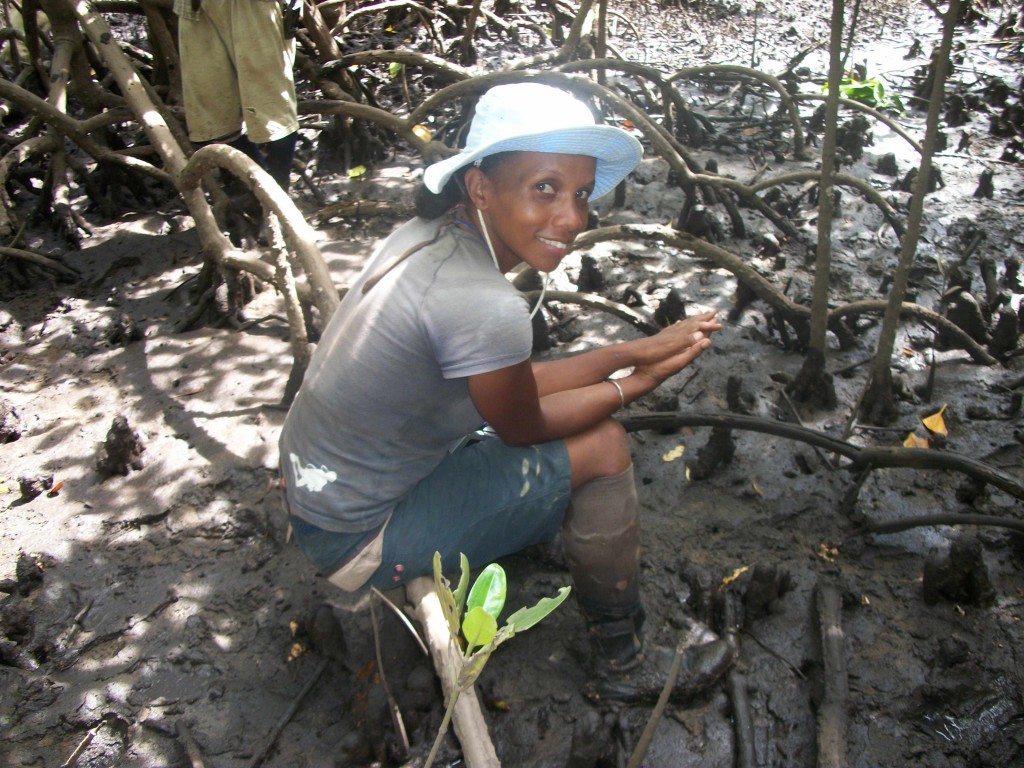In the sixteenth instalment in our series of Q&As with Blue Ventures staff, we ask Lalao Aigrette, our Senior Blue Carbon Scientist, some searching questions about science, conservation and superpowers…
What is your scientific background?
I have a degree from the Marine Science Institute (IHSM – Institut Halieutiques et des Sciences Marines) at the University of Toliara in Madagascar, and I am certified to be an Marine Protected Area (MPA) manager.
Why do you do what you do?
I do what I do because when I was a student, my ambition was to be a scientist involved in the management of either terrestrial or marine and coastal resources.

What is the best thing about being a conservation scientist?
The best thing about being a conservation scientist is using and applying the knowledge and experiences that I gathered from my studies and my professional life. It is also good to learn and discover new things from the research that I undertake, such as the evaluation of carbon stocks in mangroves.
What do you enjoy most about your job?
I love playing with data; I find data analysis the most enjoyable thing about my job. I feel that time is running very fast when I do the data analysis, and having an encouraging result is very exciting!
What is your favourite species and why?
Amongst the nine mangroves species that we have inventoried in Madagascar, Bruguieria gymnorrizha is my favourite one. When we are conducting the mangrove ecological survey and recording the name of the tree species, the nickname of the Bruguieria gymnorrizha is ‘Lalao’s species’. This species has a good shape and nice colour; I can say with no hesitation that this is the prettiest mangrove species in the world!

Bruguieria gymnorrizha
What would your scientific superpower be?
Since mangroves provide valuable ecosystem services for people in the world, especially for coastal villages, my scientific superpower would be to sustainably manage mangrove ecosystems through identifying suitable strategies; like the Reducing Emissions from Deforestation and Degradation (REDD) mechanism. I would like to create and/or revise existing policies on mangrove conservation based on the results of the research that we have completed.
What is one of the strangest things that has happened to you while working on conservation?
Mangroves generally do not grow again when they are cut but when I was conducting an ecological survey in Belagnora, a little north of Belo sur Mer, I saw an extraordinary thing! My favourite mangrove species, Bruguieria gymnorrizha, had been cut and was growing again. This was the first time in my life to see it!

